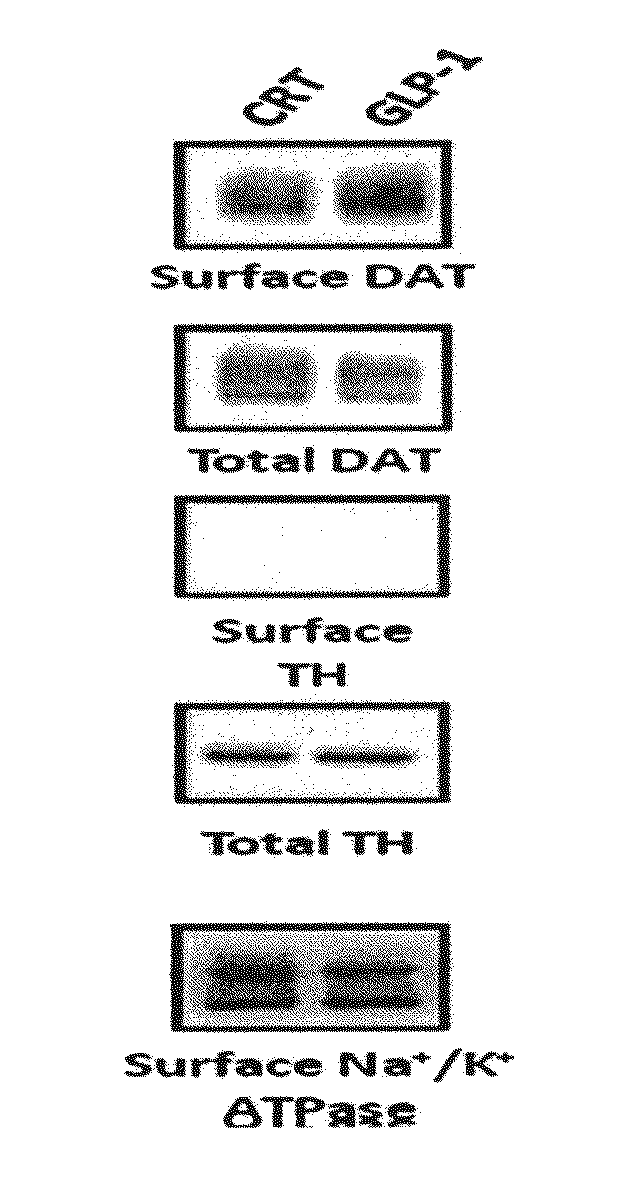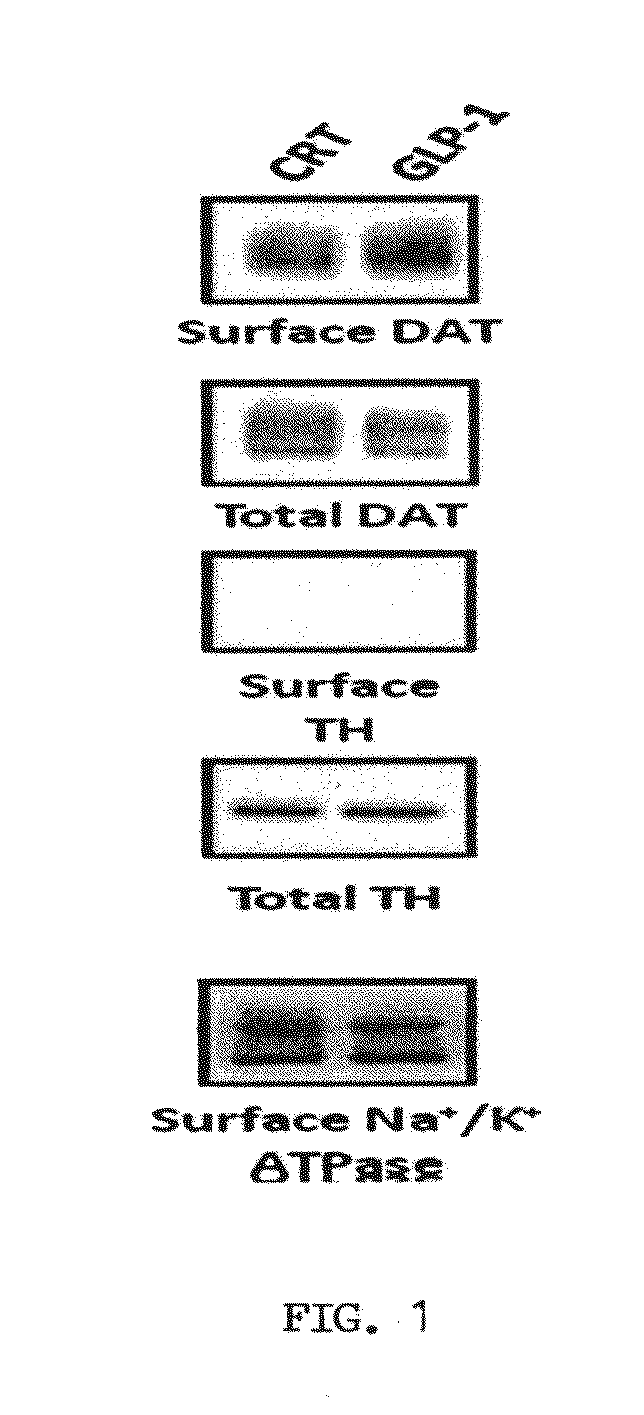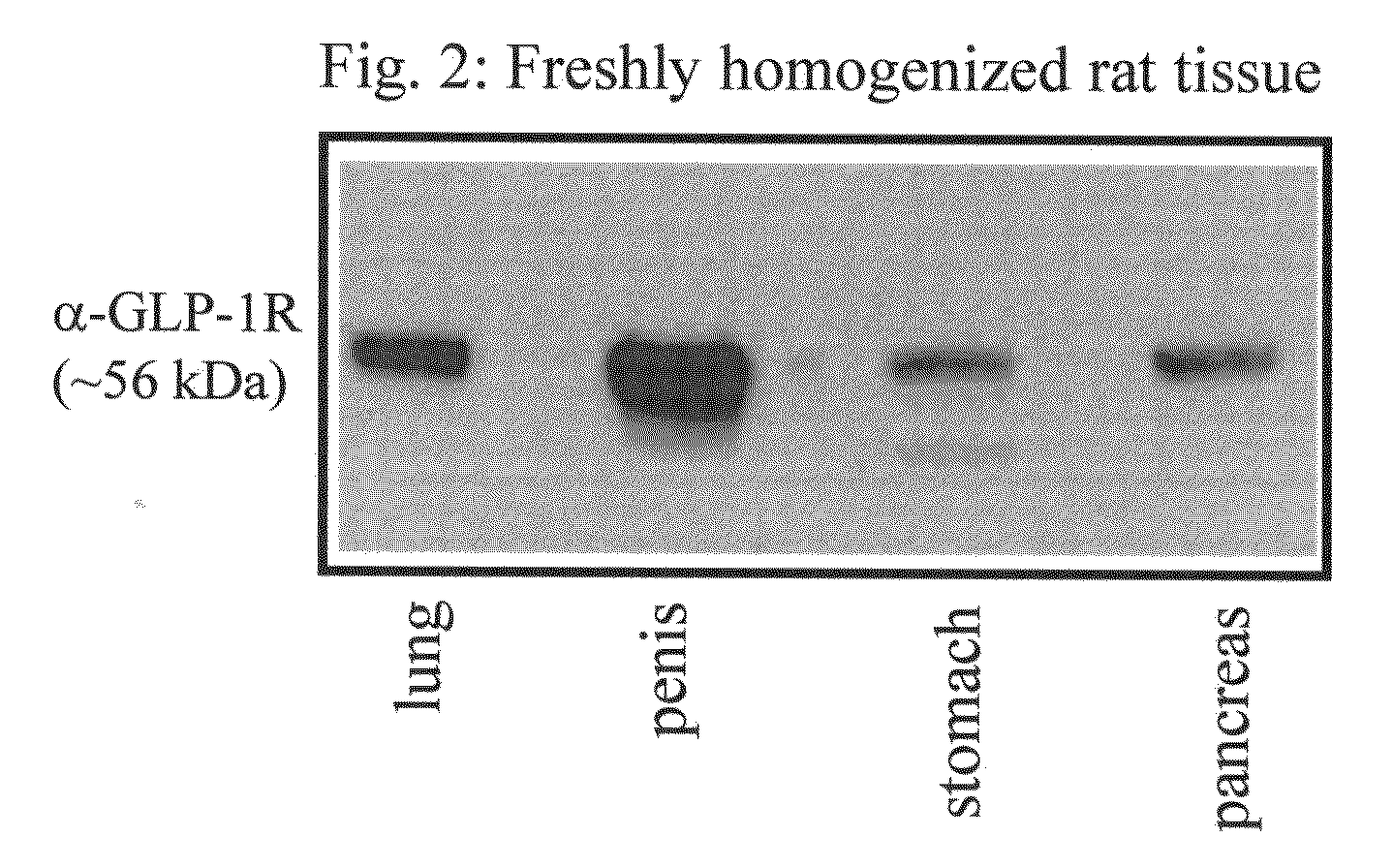GLP-1 receptor modulation of addiction, neuropsychiatric disorders and erectile dysfunction
a neuropsychiatric disorder and erectile dysfunction technology, applied in the field of neurophysiology, can solve the problems of stigma, lack of access to treatment and rehabilitation, and failure of attempts to treat and prevent drug use through tough penal sanctions for drug users, so as to reduce the chance of developing dependence and reduce the dependence of a subj
- Summary
- Abstract
- Description
- Claims
- Application Information
AI Technical Summary
Benefits of technology
Problems solved by technology
Method used
Image
Examples
example 1
[0136]Using a novel slice based biotinylation developed in the inventors' labs, GLP-1 (100 nM) was shown to increase DAT cell surface expression in rat striatal slices. Striatal slices were exposed to either vehicle or GLP-1 for 20 min and level of DAT surface expression was evaluated using Western Blot of biotinylated brain tissue. GLP-1 treatment significantly increased surface expression of DAT, quantified as the ratio of surface to total DAT. GLP-1 did not affect surface expression of the Na+ / K+ ATPase (FIG. 4B) suggesting that GLP-1 regulation of DAT surface levels is not due to a global effect on trafficking of plasma membrane proteins. In addition, the absence of tyrosine hydroxylase (TH, a cytosolic protein found in DAT terminals) from the biotinylated surface fraction serves a control for the integrity of our slice preparation and specificity of the surface signal.
example 2
[0137]Striatal slices were exposed to either vehicle or GLP-1 (100 nM) for 10 min and DAT activity was evaluated by radioalabed DA [3H-DA] uptake. Slices were exposed to 3H-DA for 10 min and then washed to remove excess DA at 4° C. to stop uptake. Slices were homogenized and 3H-DA quantified by a scintillation counter. GLP-1 significantly increased DA uptake.
example 3
[0138]Chronoamperometry was used to evaluate AMPH-induced DA efflux in striatal slices. AMPH (10 μM) was perfused onto the slices after pretreatment with either vehicle or GLP-1 (100 nM, for 20 min). Pretreatment with GLP-1 significantly potentiates the AMPH-induced increase in extracellular DA. This AMPH-induced increase in extracellular DA was cocaine sensitive suggesting it is mediated by DAT.
PUM
| Property | Measurement | Unit |
|---|---|---|
| temperature | aaaaa | aaaaa |
| delay time | aaaaa | aaaaa |
| delay time | aaaaa | aaaaa |
Abstract
Description
Claims
Application Information
 Login to View More
Login to View More - R&D
- Intellectual Property
- Life Sciences
- Materials
- Tech Scout
- Unparalleled Data Quality
- Higher Quality Content
- 60% Fewer Hallucinations
Browse by: Latest US Patents, China's latest patents, Technical Efficacy Thesaurus, Application Domain, Technology Topic, Popular Technical Reports.
© 2025 PatSnap. All rights reserved.Legal|Privacy policy|Modern Slavery Act Transparency Statement|Sitemap|About US| Contact US: help@patsnap.com



